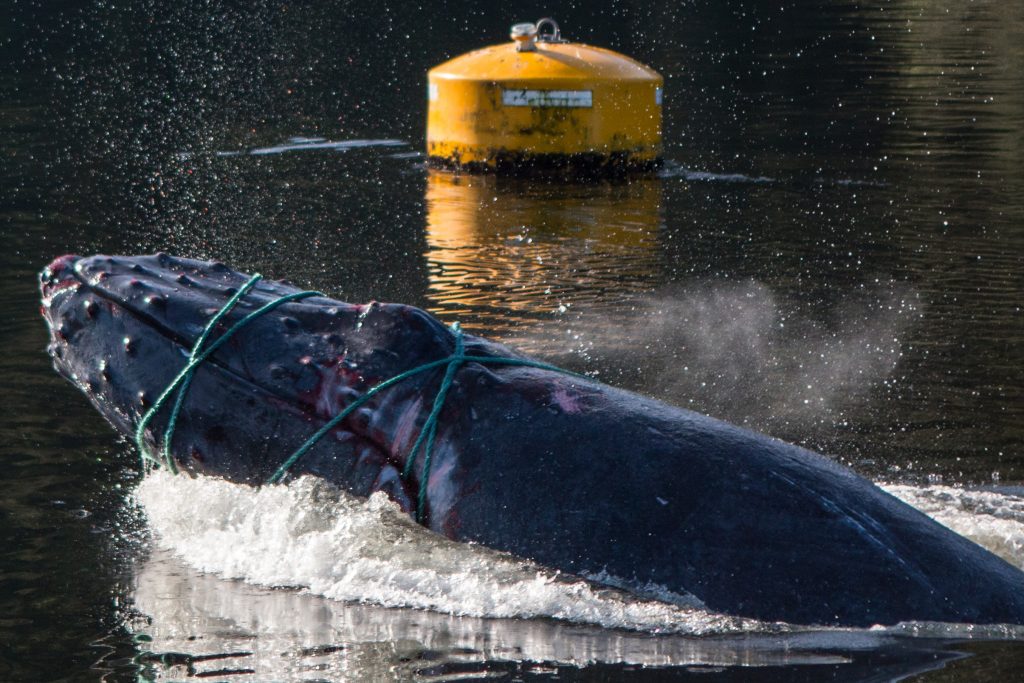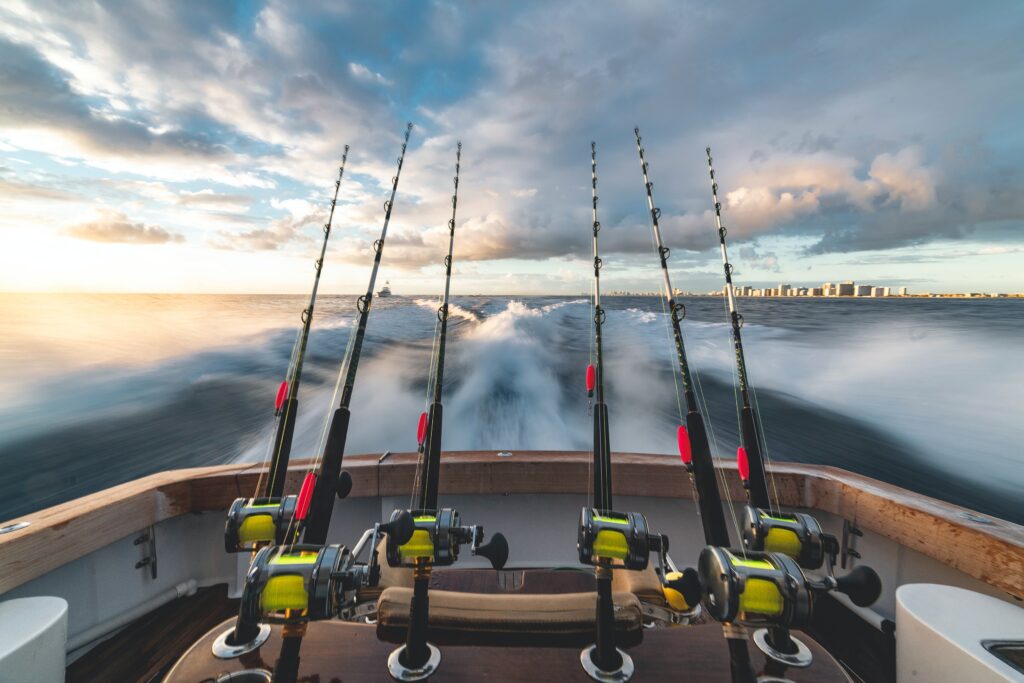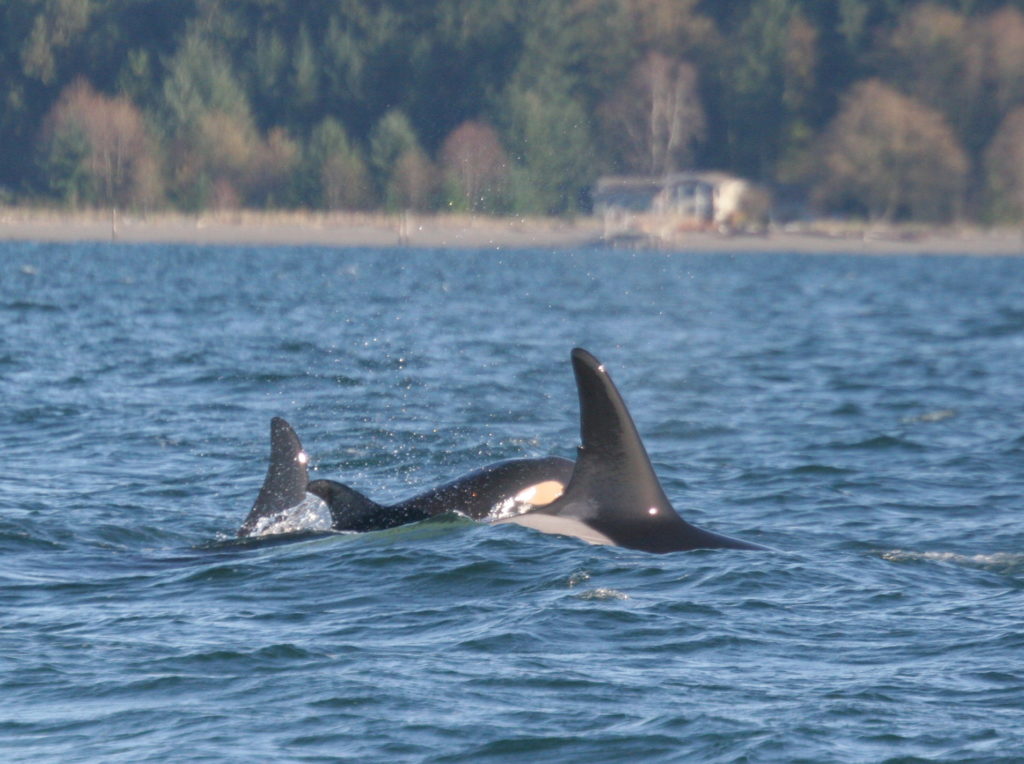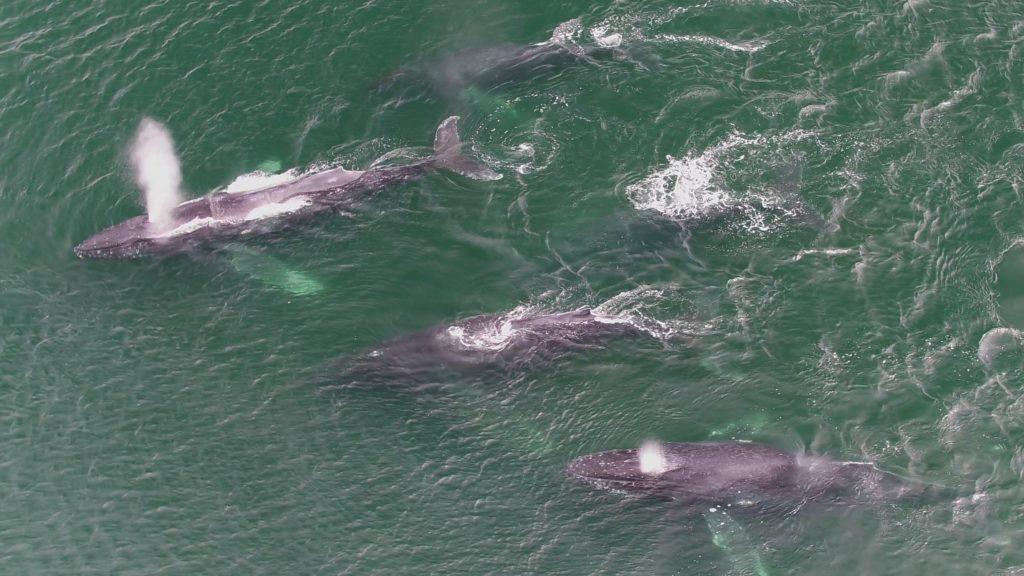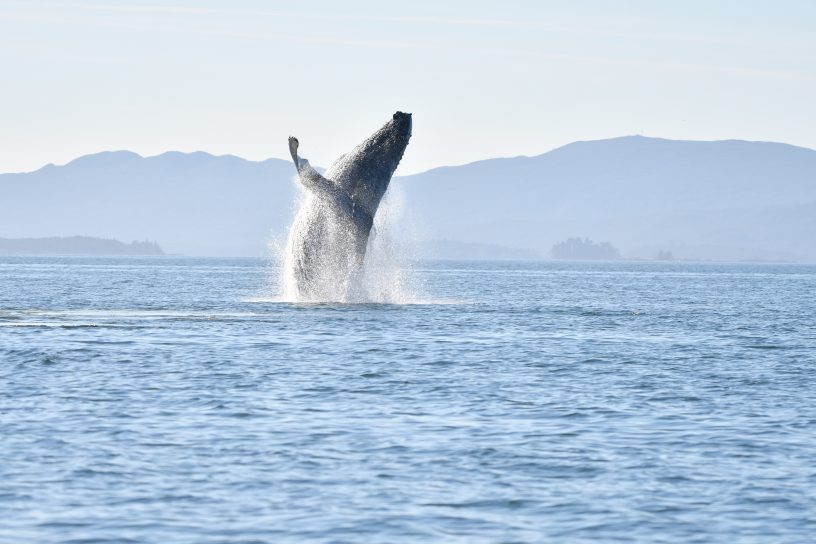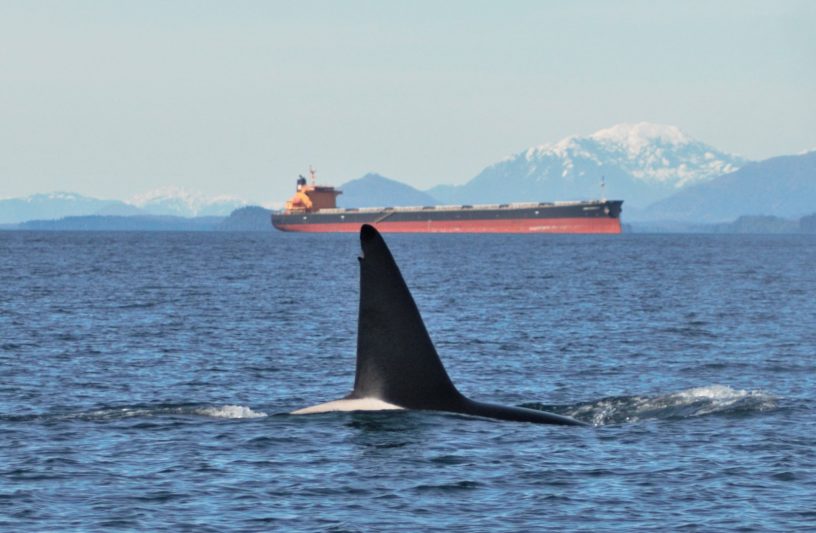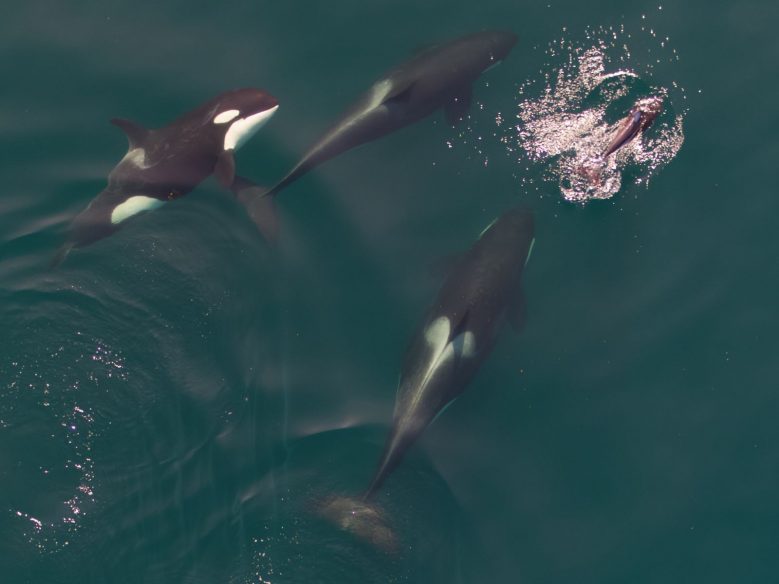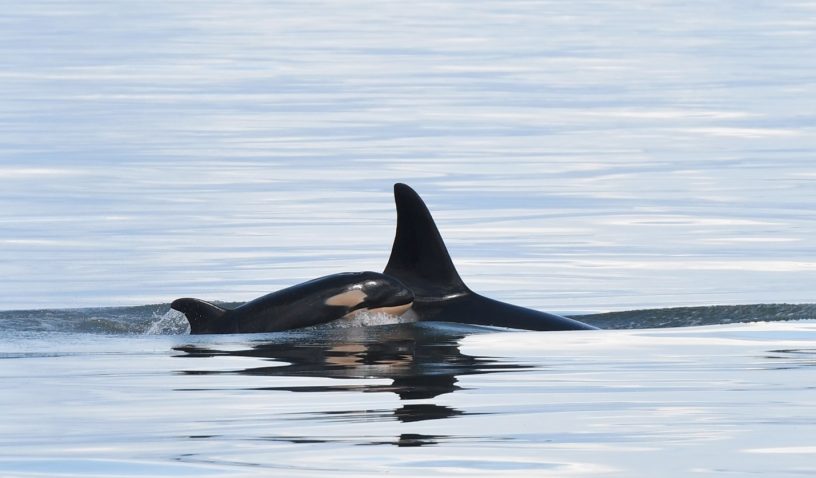Follow in our flukeprints: Breaking the mold of competitive publications in whale research
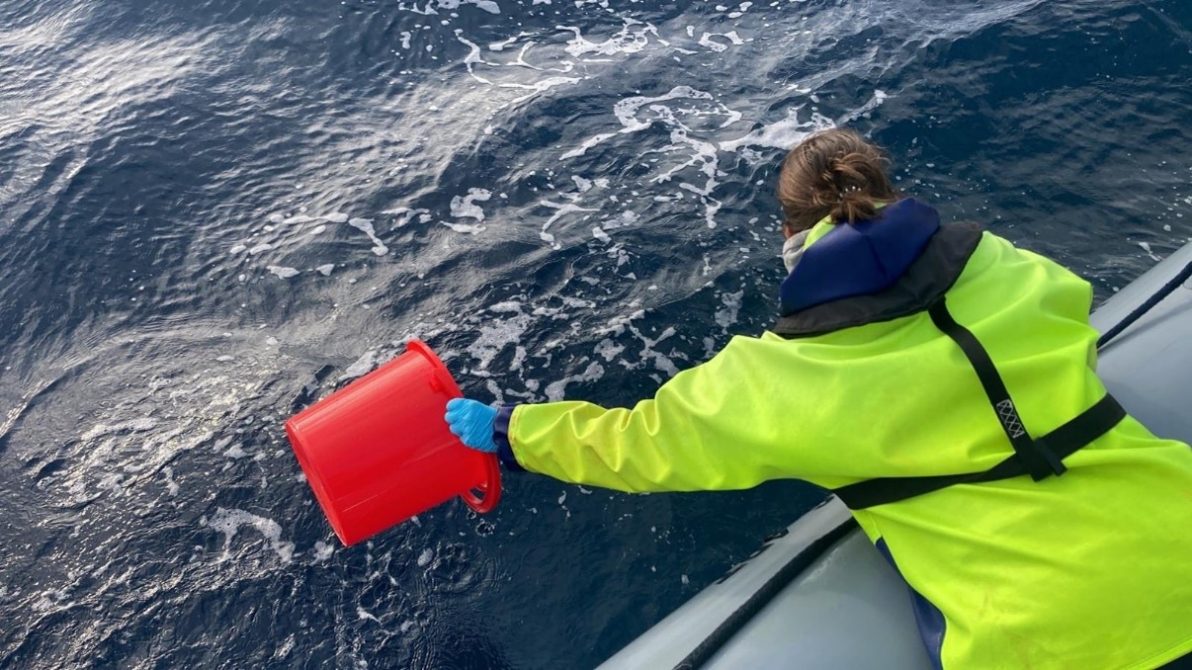
A latest study from Ocean Wise is two of a kind, but not only for the new research it presents, but how it got published
Most often in the scientific community, researchers working on similar topics are in a race to see who can publish the work first. Dubbed “publish or perish”, this competitive culture puts emphasis on quick publications which prioritize novelty to maximize the scientific credentials of the co-authors. This ultimately sees a focus on smaller, less collaborative research projects in order to keep research secrets close and prevent the scooping of ideas.
In the field of marine conservation, one factor contributing to this phenomenon includes current funding models. Limited funding – both in terms of overall availability and equitable geographic distribution -presents a significant barrier to international collaboration in research. While many research groups across the world may be addressing similar questions or conservation challenges, opportunities to join forces are often constrained by funding mechanisms that prioritize national or regional initiatives. This results in duplicated efforts, inefficiencies in knowledge sharing, and missed opportunities to develop comparative datasets.

Narrowing the focus further, the world of whale (including dolphin & porpoise) environmental DNA is a small one. Studies only really began back in 2012, first with captive and then wild populations, but since then, the field has grown significantly. Naturally, this has resulted in several research groups working on developing methods and answering eDNA-based questions on the same species but across different geographies. As scientists, we often find out about the other work going on in our field when journals request us to review submitted manuscripts. And this is exactly what happened when we submitted our paper on whale flukeprint DNA degradation rates to Environmental DNA and the request landed in Dr. Bettina Thalinger’s inbox:
“In fall 2024, I got an invitation to review a manuscript for Environmental DNA and realized that another group was also investigating the timing of eDNA sampling on cetacean detectability – a key topic in a manuscript the eWHALE team at UIBK was just now preparing for submission at the same journal. After a brief moment of panic (I remember the days of “only being published first counts”), I had to think of the joint publications on air eDNA when two research groups had decided to publish at the same time in the same journal instead of entering a publication race.
Luckily, the responsible editorial team was forthcoming towards the idea as long as the double-blind peer review process would stay in place and both manuscripts were of sound quality and passed the regular review process. I think it was not even 48h later that we had the green light from the still anonymous other team to start this adventure,” said Dr. Bettina Thalinger, eWHALE Coordinator and study senior author.
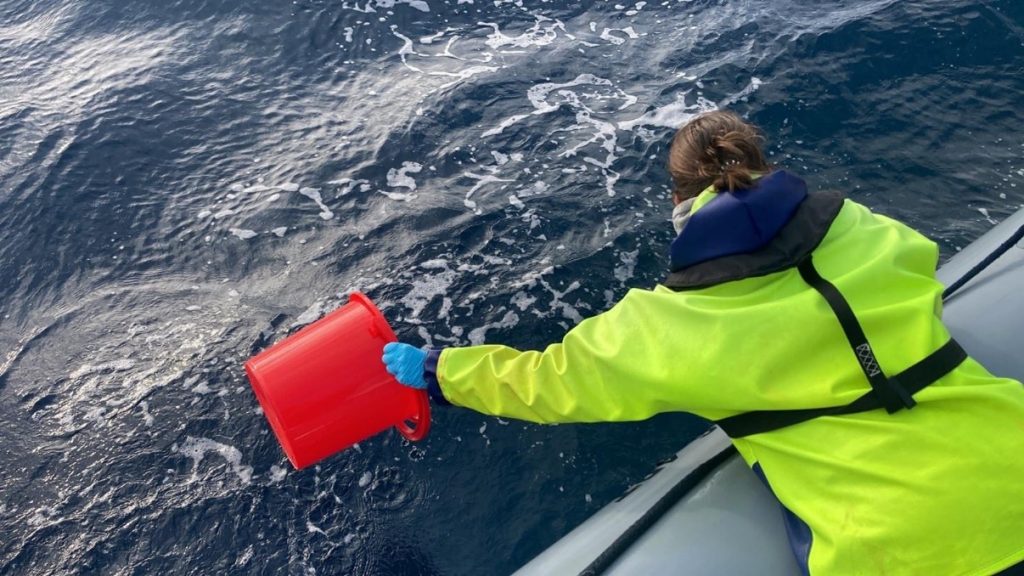
That’s right, folks. Embodying the Ocean Wise core value of Extreme Collaboration, we were thrilled to participate in this joint approach to publishing.
“I was thrilled by the opportunity for a parallel publication with the eWHALE team in Environmental DNA. It’s inspiring to see other researchers tackling the complexities of whale eDNA, and this collaboration offered a refreshing shift from the usual ‘race to publish first’ toward a shared commitment to advancing the science together. Rather than competing for novelty, we were able to co-promote the important work being done by both eWHALE and the Ocean Wise Whales Initiative to push forward eDNA-based methods for studying whales. Ultimately, the goal of research is to inform and improve conservation outcomes – and for globally distributed and ecologically vital species like whales, working together is essential,” says Dr. Chloe Robinson, Ocean Wise Whales Initiative Advisor & Technical lead and study first author.

As it turns out, our studies both uncovered similar things about how long DNA remains detectable from particular species of whale. The Ocean Wise study collected eDNA samples from three species – humpback whales, killer whales, and harbour porpoise – and tested detection rates over five time points (from 30 seconds to 10.5 minutes) through three species-specific assays. Results showed eDNA detectability declined over time, but that for all three species, a strong DNA signature was still present after five minutes. In comparison, the eWHALE study systematically modified water volume, sampling timing (immediately or delayed after the target animal’s presence), sampling location (from a whale flukeprint or breach site), and filter type, to show that larger sample volumes (10 L), immediate post-encounter collection from either a flukeprint or breach site, and Smith-Root filters (1.2 µm pore size) significantly enhanced cetacean detectability.
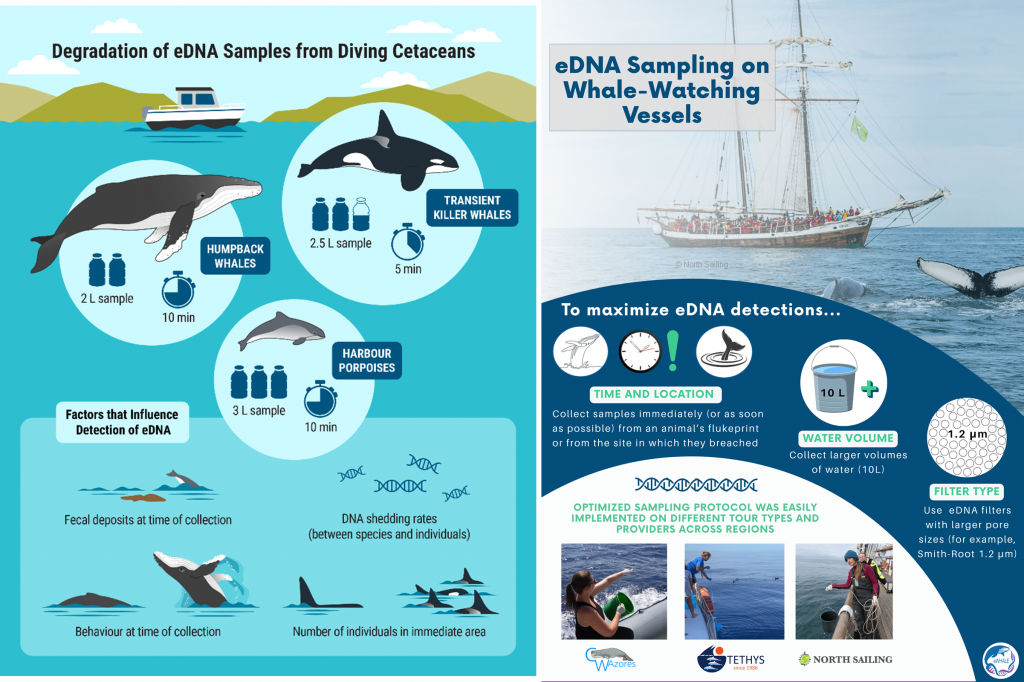
One demographic of researchers which are often the ones that suffer most from the ‘publish or perish’ mentality includes students. And the fact the first author of the eWHALE study is a PhD student at the University of Innsbruck, makes this joint effort of publication and promotion extra special.
“As a PhD student, being part of this joint submission to the Environmental DNA journal was a unique and formative experience. I was involved in both the writing of our manuscript and the peer review of the companion study. Coordinating timelines for revisions and resubmissions across both teams added an extra layer of complexity, which was ultimately successful with behind-the-scenes facilitation by journal editors. Publishing in tandem offered a rare chance to highlight shared patterns in eDNA-based monitoring for marine mammals across the Atlantic and Pacific. I’m proud to see both studies now in print, mutually cited, and contributing to a bigger picture of how non-invasive eDNA methods can be applied globally for marine research and conservation,” says Lauren Rodriguez, eWHALE PhD student and study first author.

Lead author on the eWHALE study, Lauren Rodriguez, with an eDNA sample. Credit: eWHALE.
Overall, this experience was great not only for breaking the status quo of publishing, but to jointly contribute to improving our understanding of whales and how we can utilize non-invasive eDNA more effectively to close knowledge gaps and inform effective conservation. Importantly, this opportunity has also fostered networking between the two research groups, and we hope to work closer together in the future to unlock more eDNA secrets for whales.
Research from Ocean Wise was supported partially by a financial contribution from Fisheries and Oceans Canada’s Coastal Environmental Baseline Program and Prince of Whales and North Island Kayak.
To keep up to date with Ocean Wise and eWHALE’s work, follow us on socials here:
Bluesky (@ewhale-dna.bsky.social)
Instagram (@ewhale.dna & @oceanwise)
Posted July 3, 2025 by Rosemary Newton
